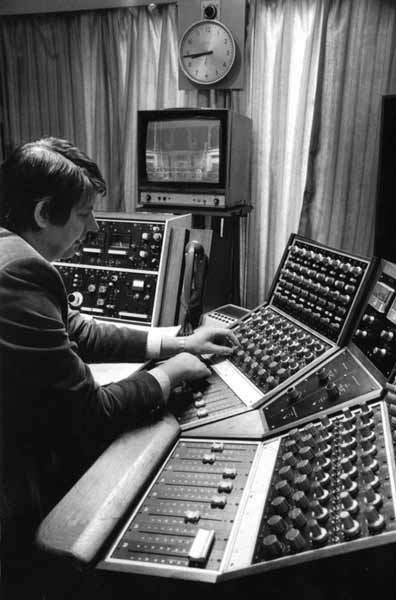The Royal Albert Hall isn't really a BBC Outside Studio, of course, but for eight weeks every summer it seems like one.
It was in 1927, the year in which Company became Corporation, that the BBC took over the running of the Promenade Concerts but the concerts had started more than thirty years earlier. They were the idea of impresario Robert Newman who was the manager of the Queen's Hall in London - just across the road from the site of the future Broadcasting House. Newman's idea was to create a public for classical and modern music, starting with popular pieces and gradually raising the standard. He offered Henry Wood the post of conductor of a permanent orchestra at the Queen's Hall and the first Prom took place on August 10th, 1895.
The BBC's mandate to 'inform, educate and entertain' fitted well with Wood's vision for the Proms. The BBC Symphony Orchestra was formed in 1930 and became the main orchestra for the concerts. When World War II began in 1939 the BBC withdrew its support and two years later the Queen's Hall was destroyed by
Music Department at Bedford

Although using portable units this was a permanent installation. A beautifully built wooden console housed the units in a semi-circular arc so that all 24 channels plus 4 groups and main gain were in easy reach. This gear saw many years of reliable service. I claim credit for the allocation of different coloured inserts for the frequency adjusters in the EQ units - following the practice I'd already advocated for the Neve desk in BH Concert Hall, which had previously faced us with a mass of grey knobs, making it all-too easy to tweak the wrong one.
The BBC control room in the RAH was up on the balcony level and had no view, so note the CCTV monitor which enabled us to see what was going on. This was introduced in the late '70s and we were actually able to control the camera remotely - then a highly sophisticated facility. Up to my departure, the slung mics rigged at the start of each season were AKG 422 stereo mics or pairs of AKG 414EBs. Towards the end of my stint we were also using B&K 4006s. There
The BH Concert Hall
External Link

